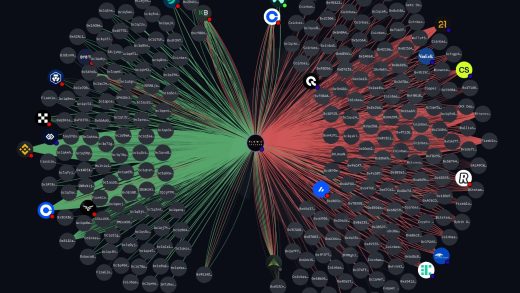I. Industry Risk Analysis
(1) Policy Risk
Currently, the policies in the PCCP pipeline industry are in a period of dynamic adjustment, and entrepreneurs face multiple policy risks. During the policy – making stage, due to the imperfect industry standards, the access threshold is unclear, which increases the compliance cost. In the implementation stage, the stricter environmental protection supervision may drive up the production transformation cost. If the industry data fails to meet the expectations after policy evaluation (such as over – capacity or frequent safety accidents), restrictive policies such as production limitation and rectification may be triggered. Policy adjustment or change in direction (such as the guidance of new material substitution or the slowdown of infrastructure projects due to the contraction of local finance) will force enterprises to increase investment in technological upgrading or bear the pressure of order fluctuations. If the old policies end quickly and the connection is poor, small and medium – sized enterprises are prone to being passively eliminated when their capital reserves are insufficient.
(2) Economic Risk
Under the current downward pressure of the economic cycle, the slowdown in the growth rate of infrastructure investment has led to weak demand for PCCP pipelines. The tight local government finances have caused large – scale projects such as water conservancy projects to be postponed or scaled down, intensifying the contradiction of over – capacity in the industry. Affected by global inflation, the prices of raw materials have continued to fluctuate at a high level, but the bargaining power in the terminal market is weak, and the cost cannot be effectively passed on, continuously squeezing the gross profit margin of enterprises. In a credit – tightening environment, the model of construction with advanced funds has exacerbated the elongation of the accounts receivable cycle of enterprises, and the cash – flow pressure has increased sharply. Small and medium – sized manufacturers are facing the double strangulation of rising financing costs and delayed order payments, accelerating the exposure of the risk of industry reshuffle.
(3) Social Risk
For entrepreneurs in the PCCP pipeline industry, the current social risks are mainly concentrated in the inter – generational gap between supply and demand. The main demand for traditional infrastructure comes from water conservancy projects led by the government and state – owned enterprises, while the new generation of consumers tend to support digital and ecological infrastructure investment, resulting in the tilt of policy resources towards new infrastructure such as smart water services. The high environmental protection requirements of the young group are promoting the transformation of urban pipeline network materials to lightweight composite materials. The pollution attribute of traditional concrete pipes is rejected by social values, and the industry risks being labeled as “backward production capacity”. At the same time, the labor structure gap is intensifying. Young technical talents generally flow to the fields of new energy and artificial intelligence, and the crisis of skill inheritance in the traditional manufacturing industry continues to deepen.
(4) Legal Risk
Entrepreneurs in the PCCP pipeline industry face multiple legal risks. In terms of the control environment, stricter environmental protection supervision means that failure to meet the wastewater discharge standards will trigger high – value fines. In risk assessment, the rapid iteration of national standards may lead to the invalidation of quality certifications for existing products. At the level of control activities, flaws in contract terms are likely to cause disputes with suppliers in the raw material procurement process. In the information and communication link, deviations in the transmission of technical parameters and acceptance standards are likely to cause disputes over project performance. Regarding the supervision mechanism, the lack of supervision during the construction process may lead to joint and several compensation for engineering safety liabilities. It is recommended to establish a special environmental protection compliance team to track the “Regulations on the Administration of Pollution Discharge Permits”, set up a quality early – warning system to monitor the revision of the GB/T 19685 standard in real – time, introduce blockchain technology to solidify key contract terms, build a multi – party collaborative project information platform, and configure a third – party flying inspection mechanism to strengthen construction supervision.
II. Entrepreneurship Guide
(1) Suggestions on Entrepreneurial Opportunities
Against the backdrop of the surging demand for water conservancy infrastructure and urban pipeline network renewal, entrepreneurs in the PCCP pipeline industry can focus on three major opportunities. Firstly, develop high – performance, corrosion – resistant low – carbon cement – based composite materials to meet the needs of sponge cities and long – distance water transmission projects. Secondly, integrate the Internet of Things technology to build a pipeline health monitoring system, providing “intelligent diagnosis + precise replacement” solutions for the renovation of old pipeline networks. Thirdly, enter the segmented market of county – level water supply pipeline network upgrading, reduce transportation costs through modular prefabrication technology, and meet the demand of small and medium – sized water conservancy projects for cost – effective and quickly – constructed pipe materials.
(2) Suggestions on Entrepreneurial Resources
PCCP pipeline entrepreneurs need to focus on the integration of technical resources. They should first connect with water conservancy research institutes to obtain production process optimization solutions, and reach technical licensing agreements with enterprises holding patents for prestressed concrete cylinder pipes to reduce R & D risks. On the capital side, they can apply for special national subsidies for water conservancy infrastructure and participate in project bidding in the EPC mode jointly with local urban investment companies. In terms of the supply chain, they should lock in regional leading suppliers such as Jidong Cement and sign long – term price – guarantee agreements, and build transfer warehouses jointly with heavy – duty logistics enterprises to reduce transportation losses. They should form a business team with more than 10 years of experience in municipal engineering, focus on maintaining relationships with water conservancy bureaus and design institutes, enhance the connection with the government and enterprises by participating in industry standard – revision meetings, and use BIM technology to establish a digital twin model project library to improve the competitiveness in bidding.
(3) Suggestions on Entrepreneurial Teams
When forming an entrepreneurial team in the PCCP pipeline industry, technical backbones with experience in concrete material R & D and pipeline structure design should be recruited first, and engineering managers familiar with the process of water conservancy infrastructure projects should be arranged to ensure the ability to break through technical barriers and implement projects. Market members with the ability to integrate government resources should be introduced to strengthen the cooperation with water affairs departments and general project contractors. The team needs to establish a joint decision – making mechanism of “technology + engineering + business”, set up special performance incentives for long – cycle projects (2 – 3 years), select stress – resistant members through full – cycle pressure tests of simulated projects, and core members should hold industry association – certified qualifications to enhance the competitiveness in bidding.
(4) Suggestions on Entrepreneurial Risks
In project selection, entrepreneurs should give priority to undertaking water conservancy and municipal projects supported by policies, strictly evaluate the creditworthiness and repayment ability of the owners, and sign step – by – step payment terms. A price – fluctuation early – warning mechanism for steel and cement should be established, long – term floating pricing agreements should be signed with suppliers, and key raw materials for three – month usage should be reserved. A professional bidding team should be formed to accurately calculate costs, and a 10% – 15% risk reserve should be set aside to deal with construction changes. The Internet of Things technology should be used to monitor the production quality data of pipelines in real – time, and environmental assessment certification should be obtained in advance to avoid the risk of production suspension. They should actively connect with local urban investment platforms and participate in PPP projects in the form of a consortium to disperse the pressure of advanced funds.





